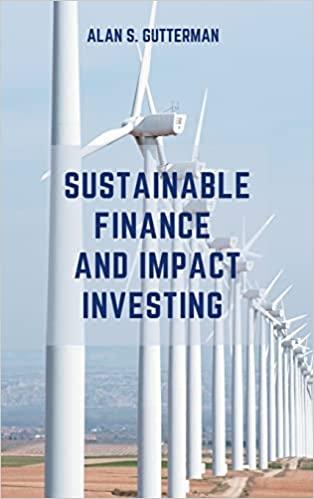Answered step by step
Verified Expert Solution
Question
1 Approved Answer
The Superior Landscaping Company must replace one or two of his aging utility trucks in calendar year 2020. The key parameters of the three trucks


The Superior Landscaping Company must replace one or two of his aging utility trucks in calendar year 2020. The key parameters of the three trucks under scrutiny are provided below. GM Parameters 1. Initial Cost ($) FORD 235,000 RAM 275,000 265,000 2. Revenues 220,000 at 1 increasing by 2% annually thereafter. 240,000 at EOY1 increasing by $3,000 annually thereafter. 254,000 at EOY1 increasing by 1.0% annually thereafter. ($) 3. Operating costs 110,000 at EOY1 to EOY3. 145,000 at EOY1 decreasing by $1,000 annually thereafter 183,000 at EOY1 decreasing by 1% annually thereafter. ($) 6,000 17,000 12,000 4. End-of-life salvage value ($) 5. Useful life (years) All parameter values are fictitious. EOY = End-of-year Industry Standard = 3 years MARR = 10% 13. Ford's benefit/cost (B/C) ratio (second decimal; no rounding) is a) 0.96; b) 1.06; c) 1.08; d) 1.10. RAM's benefit/cost (B/C) ratio (second decimal; no rounding) is a) 1.01; b) 1.05; c) 1.08; d) 1.10. 15. The incremental B/C ratio (second decimal; no rounding) between the Ford and GM trucks is a) 0.93; b) 0.95; c) 0.98; d) 1.02. The incremental B/C ratio (second decimal; no rounding) between the GM and RAM trucks is a) 0.91; b) 0.95; c) 1.01; d) 1.03. 16. 17. The best truck based on the benefit-cost ratio method is a) Ford; b) GM; c) RAM; d) None of the trucks is acceptable. 18. Ford's Intemal Rate of Return (IRR) (first decimal; no rounding) is a) 18.9%; b) 22.2%; c) 23.8%; d) 26.6%. The Superior Landscaping Company must replace one or two of his aging utility trucks in calendar year 2020. The key parameters of the three trucks under scrutiny are provided below. GM Parameters 1. Initial Cost ($) FORD 235,000 RAM 275,000 265,000 2. Revenues 220,000 at 1 increasing by 2% annually thereafter. 240,000 at EOY1 increasing by $3,000 annually thereafter. 254,000 at EOY1 increasing by 1.0% annually thereafter. ($) 3. Operating costs 110,000 at EOY1 to EOY3. 145,000 at EOY1 decreasing by $1,000 annually thereafter 183,000 at EOY1 decreasing by 1% annually thereafter. ($) 6,000 17,000 12,000 4. End-of-life salvage value ($) 5. Useful life (years) All parameter values are fictitious. EOY = End-of-year Industry Standard = 3 years MARR = 10% 13. Ford's benefit/cost (B/C) ratio (second decimal; no rounding) is a) 0.96; b) 1.06; c) 1.08; d) 1.10. RAM's benefit/cost (B/C) ratio (second decimal; no rounding) is a) 1.01; b) 1.05; c) 1.08; d) 1.10. 15. The incremental B/C ratio (second decimal; no rounding) between the Ford and GM trucks is a) 0.93; b) 0.95; c) 0.98; d) 1.02. The incremental B/C ratio (second decimal; no rounding) between the GM and RAM trucks is a) 0.91; b) 0.95; c) 1.01; d) 1.03. 16. 17. The best truck based on the benefit-cost ratio method is a) Ford; b) GM; c) RAM; d) None of the trucks is acceptable. 18. Ford's Intemal Rate of Return (IRR) (first decimal; no rounding) is a) 18.9%; b) 22.2%; c) 23.8%; d) 26.6%
Step by Step Solution
There are 3 Steps involved in it
Step: 1

Get Instant Access to Expert-Tailored Solutions
See step-by-step solutions with expert insights and AI powered tools for academic success
Step: 2

Step: 3

Ace Your Homework with AI
Get the answers you need in no time with our AI-driven, step-by-step assistance
Get Started


